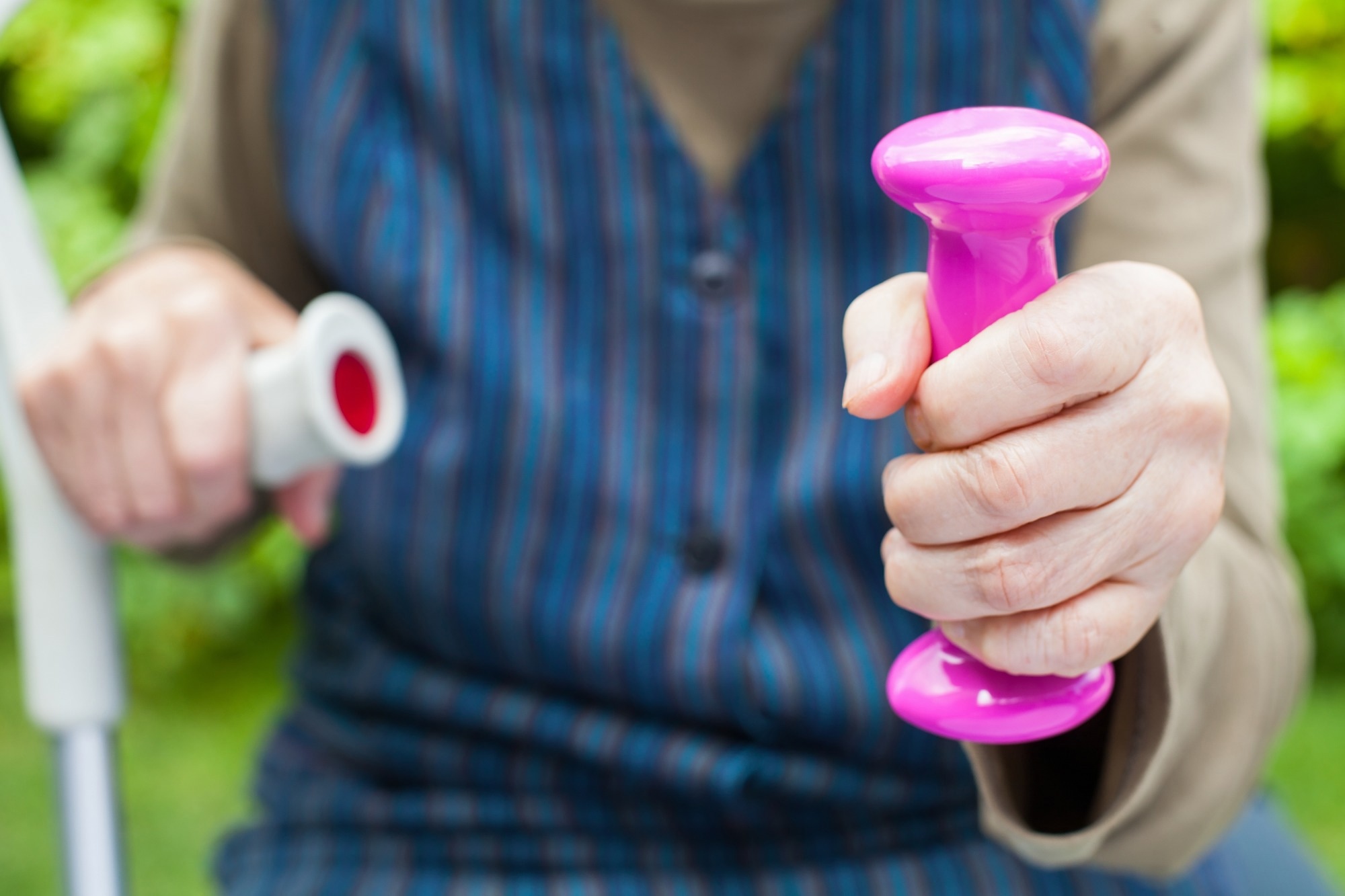In a recent review published in the Cochrane Database of Systematic Reviews, researchers in Germany performed a network meta-analysis (NMA) to evaluate the effectiveness of physical exercise in managing Parkinson's disease (PD) patients.
 Study: Physical exercise for people with Parkinson’s disease: a systematic review and network meta‐analysis. Image Credit: Ocskay Mark / Shutterstock
Study: Physical exercise for people with Parkinson’s disease: a systematic review and network meta‐analysis. Image Credit: Ocskay Mark / Shutterstock
Background
PD is a progressive nervous system disorder that predominantly affects individuals above 60 years of age. Symptoms worsen gradually and include movement difficulties, such as stiffness, trembling, increasingly slow movements, and difficulties in coordination and balance.
In addition, PD patients may have affected mood and emotion, fatigue, and difficulties sleeping. PD is incurable; however, the symptoms can be managed with pharmacotherapeutic or surgical options. PD patients could benefit from physical exercises and physiotherapy. However, the relative therapeutic benefits of various exercise types are unclear.
About the study
In the present study, researchers evaluated the effectiveness of different physical exercises among adult PD patients on motor sign severity, adverse event (AE) occurrence, and quality of life (QoL).
Randomized controlled trials (RCTs) on the comparative effectiveness of different physical exercise types were searched in databases Embase, MEDLINE, and CENTRAL through May 17, 2021. In addition, conference proceedings, trial registries, and references of records identified were searched.
The study interventions included balance exercises, gaming, endurance training, gait training, resistance training, strength training, aqua-aerobic exercises, dance therapy, LVST BIG, and stretching.
Interventions were categorized, and their effects on motor sign severity, QoL, gait freezing, balance, and functional movements were analyzed over 6.0 weeks. Data extraction was performed, and bias risks were assessed independently by two researchers, and another researcher resolved disagreements.
Due to heterogeneity in AE reporting, safety data were summarized narratively, and the quality of evidence was evaluated using the grading of recommendations, assessment, development, and evaluations (GRADE) method. The benefits of exercise on QoL and motor sign severity were assessed using the PD questionnaire-39 (PDQ‐39) and the unified PD rating scale (UPDRS‐M).
Results
In total, 156 randomized controlled trials (RCTs), comprising 7,939 individuals with largely mild-moderate PD without significant impairments in cognition, were considered for the final analysis.
The mean sample size of the included RCTs was 51, and data on motor sign severity, QoL, and safety were obtained from 71 RCTs (comprising 3,196 individuals), 55 RCTs (comprising 3,283 individuals) and 85 RCTs (comprising 5,192 individuals), respectively.
The mean age of the study participants ranged from 60 to 74 years, and most studies (n=34) were conducted in the USA. Most of the physical exercise types showed therapeutic benefits for PD patients compared to controls.
The findings indicated that dancing conferred moderate beneficial effects on motor sign severity, with a mean difference (MD) of ‐10.3. Aqua‐based, functional movements/balance/gait and multiple‐domain training may benefit motor sign severity moderately. With MD values for aqua‐based training, functional/balance/gait training, and multiple domain training of -7.8, -7.4, and -7.0, respectively.
Mind‐body coordination exercises and endurance training may have small beneficial effects on motor sign severity, with MD values of ‐6.6 and ‐6.4, respectively.
Flexibility-type training may have trivial to no effects on motor sign severity (MD 2.0). Uncertain evidence was obtained for the beneficial effects of resistance/strength exercises and the Lee Silverman voice training BIG (LSVT BIG) exercises on motor sign severity, with MD values of ‐7.0 and ‐5.5, respectively.
Aqua-aerobic training showed large beneficial effects on the quality of life (MD ‐15), and moderate effects were observed for endurance-type training, functional/balance/gait training, and small beneficial effects of multiple‐domain training on the QoL, with MD values of ‐9.2, ‐5.6, and -5.3, respectively.
Highly uncertain evidence was obtained on the benefits of the mind‐body coordination exercises (such as yoga or tai chi), gaming, resistance/strength training, dancing, flexibility-type training, and LSVT BIG exercises on the quality of life, with MD values of ‐8.8, ‐7.1, ‐6.3, ‐4.1, 1.2, and 2.3, respectively.
AEs were reported in 28 RCTs, and the most common AEs were falls and pain in 18 RCTs and 10 RCTs, respectively. Highly uncertain evidence was obtained on the effects of exercise on reducing AE risks, and little evidence was obtained on differences in outcomes across different types of exercise.
Conclusion
Overall, the study findings highlighted the benefits of exercise on motor sign severity and the quality of life for most exercise types among PD patients, with no major differences in outcomes across the exercise types.
Very uncertain evidence was obtained on the effects of physical exercise on lowering AE risks; the study interventions were considered safe. Further research with larger sample sizes, including individuals with advanced PD and cognitive impairments, is required to make the study findings more generalizable.